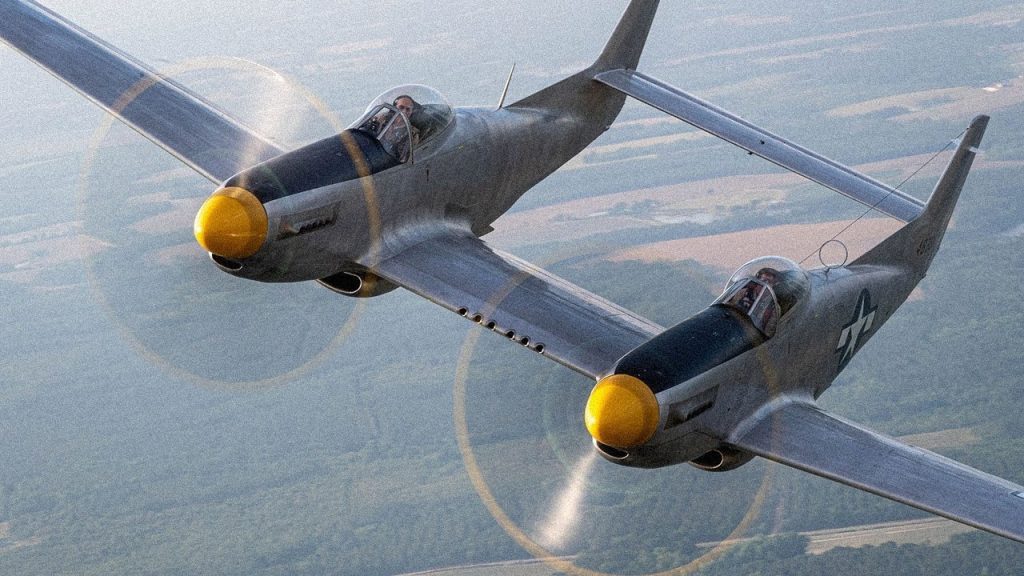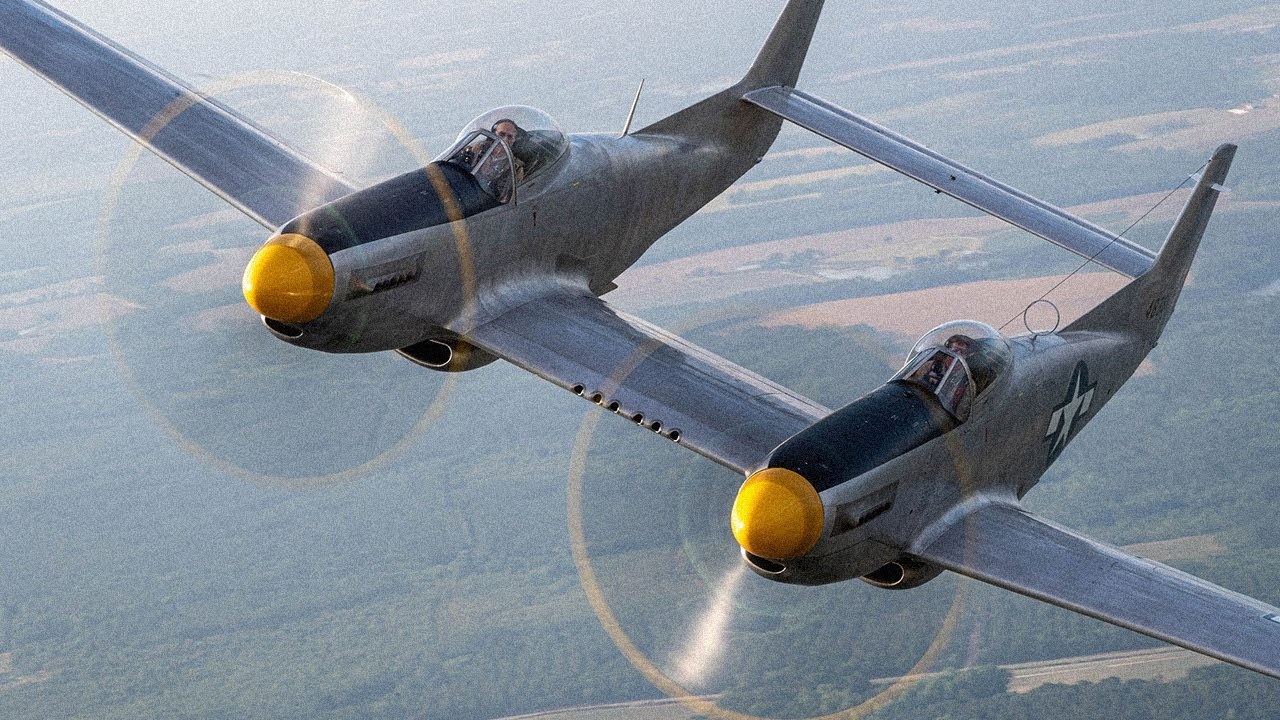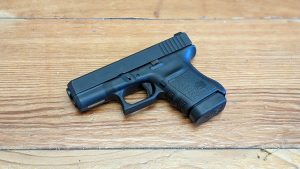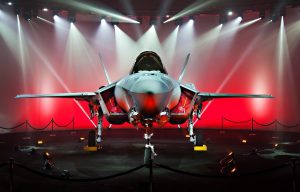Before their 1953 withdrawal, 282 P-82s and F-82s were built, compared to roughly 15,000 P-51s (the same year the Korean Armistice was signed).

The P-51D Mustang will always be remembered as the best fighter plane by many aviation historians. Yet the F-82 was designed to change that.
With the adage, “two heads are better than one,” it seems logical that two Mustangs would be superior to a single one. In other words, it’s like having two Mustangs in one aircraft, right?
North American Aviation, already well-known because of the B-25 Mitchell, seems to have had this in mind when it made the P-82/F-82 Twin Mustang a “sequel” to the P-51. Let’s investigate this strange flying object from the early days of the Cold War.
If you send me an F-82, “that monster from nowhere,” the speaker warns, “you won’t understand who’s in charge.”The late great Oscar Brand (“the Dean of American Folk Music”) and the still-alive and kicking Dick Jonas (retired USAF Lt. Col., AKA “the fighter pilot’s minstrel”) popularised the funny Air Force fighter pilot drinking song “Give Me Operations,” which includes this line.
When you look at pictures of the Twin Mustang, you might think it is a combination of the original WWII Mustang and the P-38 Lightning. The P-38 Lightning was a successful fighter plane made in the United States by Lockheed’s legendary Skunk Works, which the equally legendary Kelly Johnson led. In contrast to the Lightning, the P-82 had twin tails and twin engines, a second fuselage connected to the first by the plane’s wings and horizontal stabilizer, and a second cockpit and pilot. The reasoning behind this decision can be seen in the following Boeing fact sheet:
“By stationing two pilots in two separate fuselages, it solved the problem of pilot fatigue on extremely long flights.” It was common practice for the P-82F and P-82G to transport a radar operator in the right cockpit instead of a second pilot. The throttles and propellers may be adjusted manually from either cockpit. The left-side cockpit belonged to the pilot and housed the standard flight and engine instruments, while the right-side cockpit housed the co-pilot and had adequate equipment for relief and emergency operations. The pilots’ comfort was greatly enhanced by a streamlined cockpit layout, which included a tilting, adjustable seat to lessen the effects of jet lag on long flights.
The first flight of the Twin Mustang took place on June 15, 1945, but didn’t put into service until 1946. Unfortunately, the P-82 and F-82 weren’t ready to escort B-29 Superfortresses on their long-range, high-altitude missions over Japan (thus the need for the fatigue-reducing second pilot), but they more than made up for it during the Korean War (more on this in a bit). With a full load, the F-82 had a combat range of almost 1,600 miles (2,574 kilometers), so it was present in that department (excuse the pun).
The top speed of the Twin Mustang was 475 miles per hour (764 kilometers per hour), 35 miles (56.32 kilometers) quicker than her single-engine forerunner. However, it shared the same six Browning. Fifty caliber machine guns as the P-51D, the P-82/F-82 concentrated its firepower along the middle joining wing span, as opposed to the “Single Mustang’s” three guns in each wing (so to speak).
After sitting out WWII’s air battles, the Twin Mustang saw plenty of action in Korea. Although this twin-bodied warbird did not achieve the same level of success as the P-51, she and her crews did achieve several firsts and lasted throughout the war.
It was an F-82G that made history on June 27, 1950, by achieving the first air-to-air kill of the conflict. A Yakovlev Yak-11 was shot down by an F-82G flown by then-Lt. William “Skeeter” Hudson and radio operator Lt. Carl Fraser while they protected a Douglas C-54 Skymaster andThe F-82G would be used to shoot down the next two North Korean planes that the United States shoots down. Even though jet-on-jet fighter battles were happening more often by March 1952, they still used the Twin Mustang in Korea until that month.
For the United States Air Force, the F-82 was the last gasp before they blew up their piston-engined fighter fleet. Five are still around today and produced 282 P-82s and F-82s before they were withdrawn in 1953, compared to almost 15,000 P-51s (the same year the Korean Armistice was signed). There are five today; one may be on display at the National Museum of the United States Air Force at Wright-Patterson AFB in Dayton, Ohio. And just so you know, Platinum Fighter Sales is located in lovely Redondo Beach, California, and sells these stunning aircraft if any of you wonderful readers out there have a spare $12 million lying about doing nothing productive with it.






